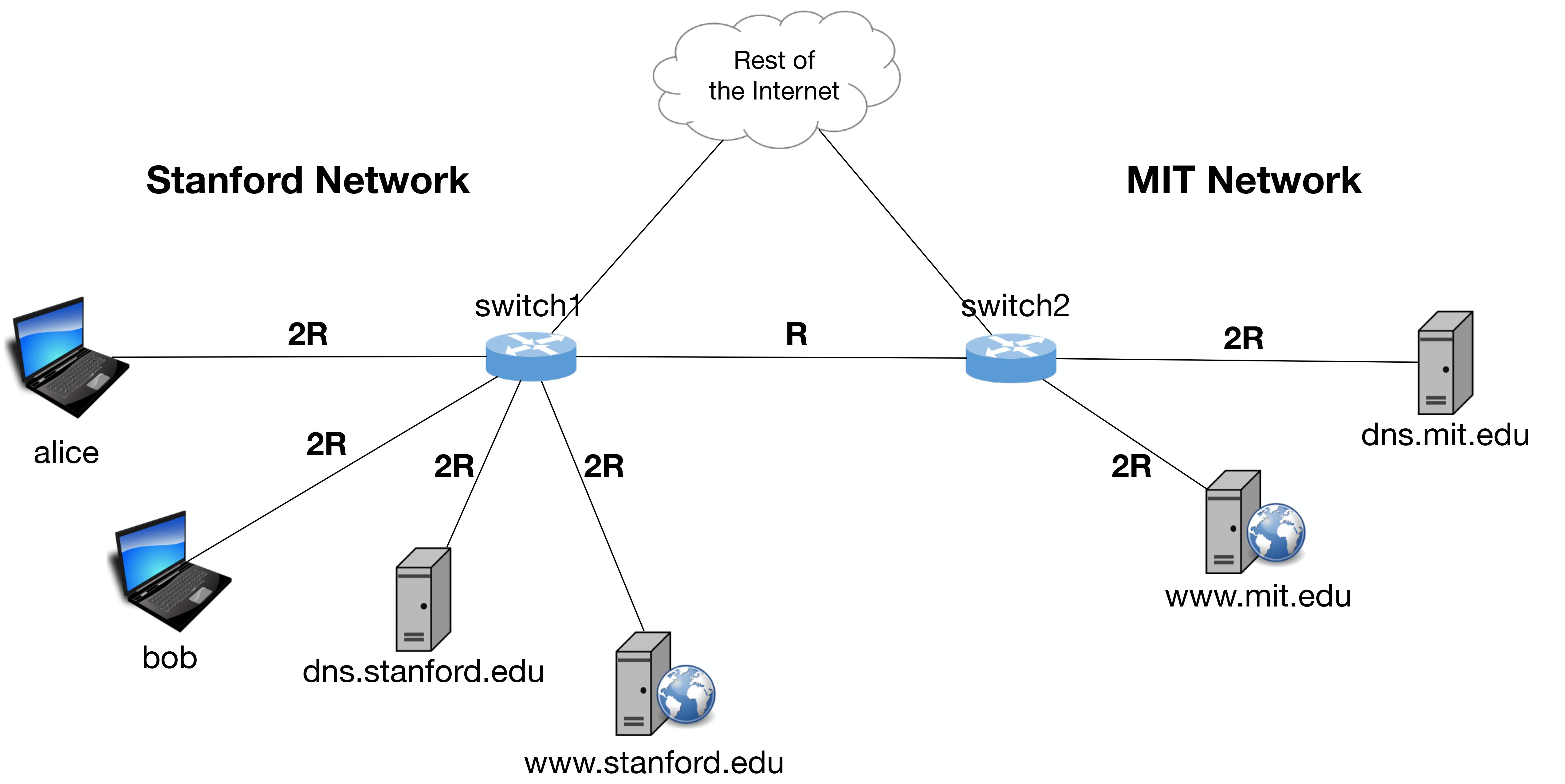Midterm 2021, Problem 2 introduction
Consider the network in this figure:

- Each link has propagation delay Dp.
- For each link, the transmission rate has the value shown in the figure in each direction.
- The maximum segment size (MSS) is 1000 bytes (for both the Stanford and MIT networks).
- switch1 and switch2 are store-and-forward packet switches with 0 processing delay.
- All Stanford computers use dns.stanford.edu as their local DNS server. dns.stanford.edu also acts as an authoritative DNS server for stanford.edu, and as a top-level-domain (TLD) DNS server for .edu. It performs recursive DNS requests.
- All MIT computers use dns.mit.edu as their local DNS server. dns.mit.edu acts as an authoritative DNS server for mit.edu. It performs recursive DNS requests.
- Web browsers and web servers communicate through persistent TCP connections (i.e., they reuse each established TCP connection to exchange as much traffic as possible).
- At the beginning of this problem, all caches (of all kinds) are empty, and there are no established TCP connections.
- In all questions except for Question 7, DNS records are cached for a day.
- There is no other traffic on the Internet other than the traffic caused by Alice's and Bob's actions.
Header and object sizes:
- Transport-layer, network-layer and link-layer headers are insignificant (assume 0 bytes).
- Assume that packets that do not carry any application-layer data experience 0 transmission delay. E.g., TCP SYN, TCP SYN ACK, and packets that carry only TCP ACKs experience 0 transmission delay.
- Each DNS request is 50 bytes.
- Each DNS response is 100 bytes.
- Each HTTP GET request is 200 bytes.
- Each HTTP GET response is 200 bytes + the size of the requested object.
- www.stanford.edu/index.html: 800 bytes
- www.mit.edu/tech-news.mp4: 2100 bytes
Last modified: Friday, 12 November 2021, 12:19